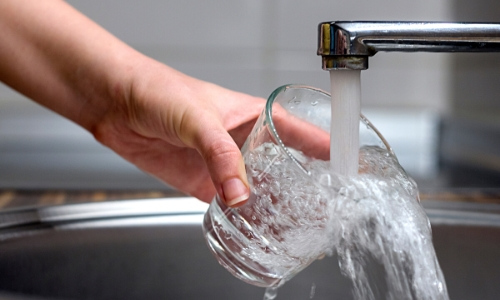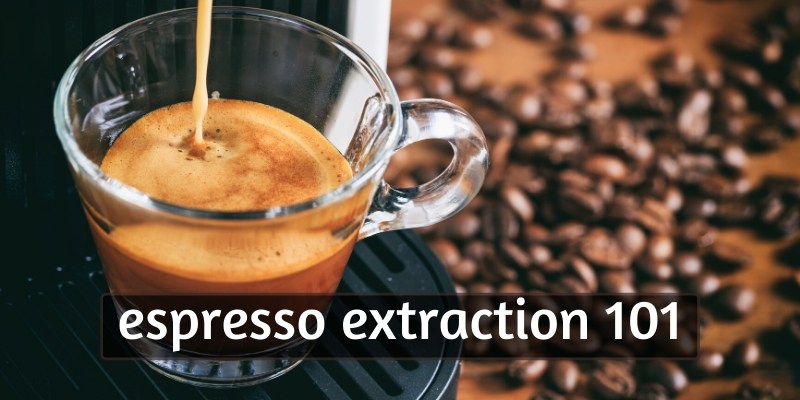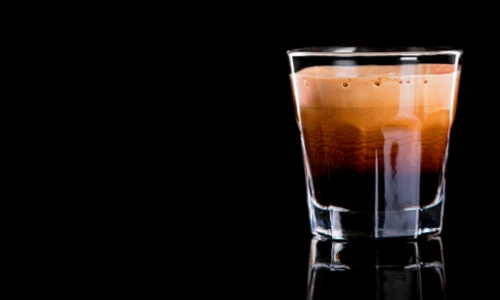Coffee has been around for a very long time, and espresso has been part of our daily lives quite a lot in the past few decades.
An espresso is only as good as its extraction is. so mastering this should be on every coffee lover's to-do list.
Many folks buy an espresso machine and then explore espresso roasts, shots and various drinks with enthusiasm, but something's always missing.
And after a lot of bad shots, we finally figure it out. It's the extraction, we're doing something wrong. How can we get a better extraction? Why is it so bad now and how can we improve it ?
The truth is nobody can make something without practicing and learning. In this article, I prepared a little guide for a perfect extraction at home.
Table of Contents
What is espresso extraction ?
Espresso is produced when hot water is pressed through the coffee grounds at high pressure. There are precisely defined parameters for an ideal espresso, which form the basis for almost all coffee recipes. All of these must be in balance with each other to extract the best from coffee.
In the first place, extraction time is one of the defined parameters that affect the quality of coffee. The ideal time is between 20-30 seconds, depending on the variety of beans. The optimal flow speed depends on the other parameters.
Other essential parameters are grind and contact pressure. These set the extraction time and the optimal flow, determining just how well the water will extract the coffee.
Furthermore, water pressure and temperature also play a role. If the espresso machine is set a few degrees too hot, the coffee will taste bitter and sometimes burned. Set it too low and it may come out very weak.
And in the end, a very significant characteristic of a good cup of espresso is c. For a time, it protects the coffee aroma. It will dissipate a few a few minutes and afterwards the aroma will quickly die down.
Checklist for a perfect espresso extraction:
- At least 18 grams of ground coffee in the portafilter for a regular espresso shot.
- Temperature of water around 88-94° (190-201°F).
- Pump pressure needs to be around 8-10 bar, but 9 bar is perfect.
- Extraction time of about 20-30 seconds, but the ideal time is 26 seconds.
- Compression pressure with tamper 15-20 kg (33-44lbs).
- Preinfustion time of 5-6 seconds. That indicates the time between when the water gets in contact with grounded coffee in the portafilter, and the shot begins to get out in the cup.
This checklist is part of all those defined parameters used in every coffee recipe and the main components for an ideal extraction. When a barista making an espresso recipe it checks all of these plus tastes.
Considering all of these parameters can help us make a better extraction, let's see how things can be improved when something goes wrong.
Over-extraction
In the beginning, the espresso runs out very shyly, and the stream remains thin. The water runs too slowly, and the stream can even be discontinued. In this case, too many substances are extracted and the taste will be salty and bitter.
Probable reasons: temperature too high, pump pressure too high, contact time too long because of too much coffee, or to finely ground, or too compactly tamped.
Result: The crema is too dark brown (sometimes with drops of oil) and the taste is too bitter and salty.
How to fix over-extraction
When you trying to fix a bad extraction just remember one thing available any time: change one parameter at a time. This is the only way to detect the problem. If you change more at once it will be very confusing to understand the extractions.
This challenge can be fixed in a few ways in this order, one at a time.
- Lower the amount of ground coffee.
- Switch to a slightly coarser grind.
- Use 2-3 kg/ 4-7 lbs less pressure when tamping.
- Lower temperature (always adjust the temperature by 1 degree, go for very small changes)
- Lower water pressure (only leave for last, the professionals do this when nothing else is not working).
Almost every time the over-extraction will be fixed by lowering the amount of coffee and/or grinding it a little coarser. Both make it so the water comes into contact with the coffee for too long and you get too much out of the ground coffee.
Under-extraction
This is not a pleasing result and is a common issue in home extraction. That because a lot of people tend to use too little coffee or too coarsely ground.
Under-extraction happens because the essential substances in the coffee have been incompletely extracted.
Probable reasons: water temperature too low, inadequate water pressure, too little coffee grounds, too coarsely ground, too loosely tamped.
Result: the crema is too light and disappears quickly. The body is watery, the aromas are not extended enough, and the aftertaste is short. The taste is sour, pungent, and unpleasant.
How to fix under-extraction
- More coffee grounds in the portafilter. Increase the quantity by 1 gram and see the results.
- Use finer grounds.
- Apply more pressure when tamping.
- Increase the water temperature by 1 degree.
- Increase the water pressure.
Remember to change one parameter at a time and in this order. In most of the cases, the problem is the quantity of coffee in the portafilter and the size of the grind.
Ideal extraction
With a little bit of knowledge and some enthusiasm this is fairly easy to obtain.
There is no magic formula for an ideal extraction, but there are those defined parameters that help us to gain a perfect espresso.
3 steps to identify the ideal extraction
1. Visual. The ideal extraction is quite simple to see. It has a rich crema with a nice golden brown color and consistency.
This color derives from the caramelization of the sugars in the coffee beans. Also, the creamy structure should be uniform and compact on the surface for 2-3 minutes.
2. Olfactory. Smelling the coffee should be a great moment. There are thousands of molecules that give espresso its intense aroma.
This procedure is simple. Just smell the coffee trying to identify its aroma. Does it smell very good ? Just good ? Bad ? If the coffee smells bad like pepper or smoky this is not a good sign. The taste also will be bad.
3. Gustatory-olfactory. Smell the coffee, stir well, and sip. This is a procedure to identify if the smell and the taste are in balance.
The ideal extraction needs to be well balanced with nice notes. If it's too bitter, too sour, too ashy, or "too" anything, something went wrong. Maybe it is under-extracted or over-extracted.
Long story short, with at least 18 grams of ground coffee, water at 92-93° C/197-199 F, 9 bar in pump pressure, 25-30 ml in cup in 26-28 seconds, you can obtain an ideal espresso extraction. If something must be changed, try to be near these parameters and everything is gonna be safe.
Tip: testing the crema is one of the professional enjoyment. Hold the cup slightly tilted and whirl its contents. The surface of the crema should remain closed and creamy. Also, you can draw a line in the crema using a spoon. If it's a good extraction, it should close up again very quickly. This indicates consistency and ideal extraction.
Why the water you use matters
98% of your cup of coffee is water. This is huge and this is why the water you use is pretty important. With all the parameters used right, water has a crucial role. Here are some significant things to know about water in coffee.
PH level does not influence the extraction of the espresso. However, it can affect the coffee machine with scale deposited and modify the sensory perception of coffee.

Particular odors and tastes. Water containing amounts of chloro-organic compounds will compromise the taste. Special filters can be integrated into the water treatment system to guarantee clean tasting water free of any particles.
Total water hardness is owing to the presence of calcium and magnesium mineral salts. These affect the extraction by causing cloudiness and bubbles in the coffee and the machine pipes and boiler. There is no limit value for hardness, but it is recommended to range between 15 and 50°f.
TDS water (Total Dissolved Solids) is also a key factor that influences the coffee extraction. At least 150-200 parts of mineral content per million are necessary for a safe extraction.
To protect the espresso and coffee machine, the water must be treated with different systems.
- Water softeners.
- Filter cartridges.
- Inverse osmosis.
The most common system used in home use is water softeners. It is accessible and does not require a lot of effort to use it.
On the opposite side is the inverse osmosis. This particular system needs a lot of knowledge about chemistry and the science behind espresso and water, and it is quite expensive.
How other things can affect the espresso
We know now about the extractions and how it works. We also understand the value of water and defined parameters, but is there something else that can affect the extractions?
Believe it or not, some baristas understand that coffee is a highly complex beverage with a lot of dispositions. For example the weather. Yes, the weather can affect the extraction and some baristas adjust the recipe by room temperature, air humidity, and the presence of the sun.
This sounds crazy, but if it's raining, the coffee can absorb the humidity. Even a little extra moist air will change things. The grind will change immediately, and the ideal extraction will become an over-extracted coffee. Then they change some defined parameters, and everything is fine.
Also, the sun stimulates the elimination of CO2 from coffee beans, and the extractions can become under-extracted.
Maybe all of this sounds intimidating, but with a little bit of practice, defined parameters, and enthusiasm everyone can make a perfect espresso extraction. I hope this article was useful!
If you want to know more about coffee or tea, feel free to check the related articles below. Who knows what else you might find ?







